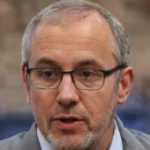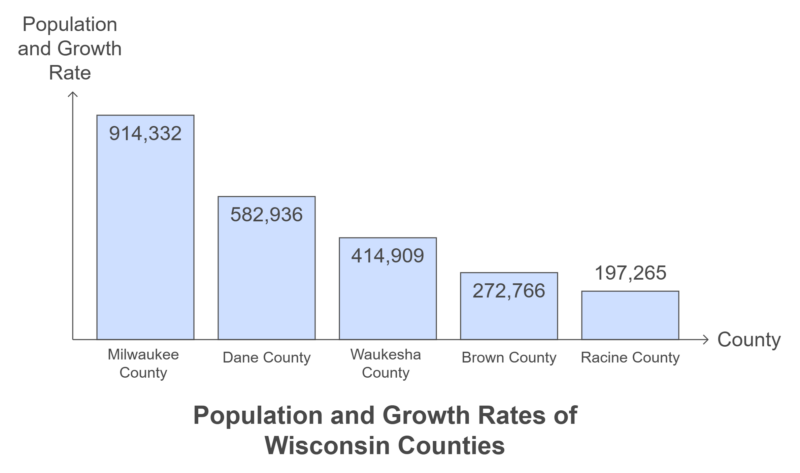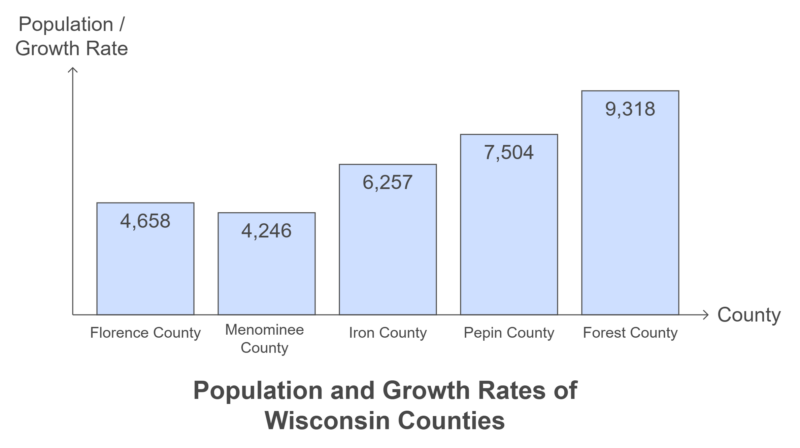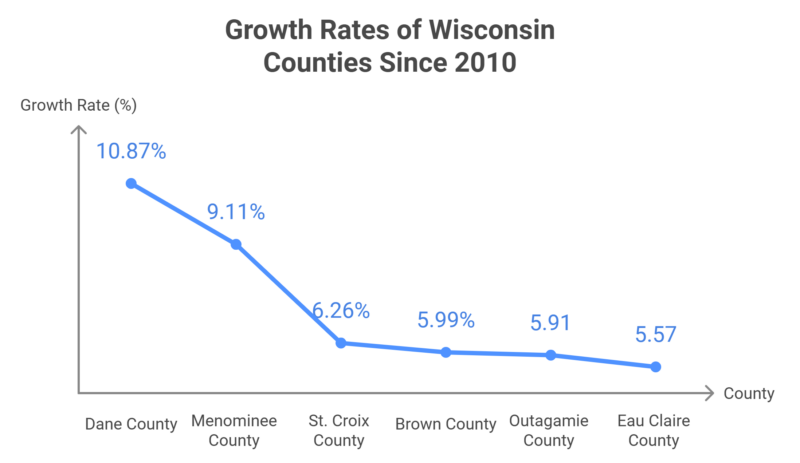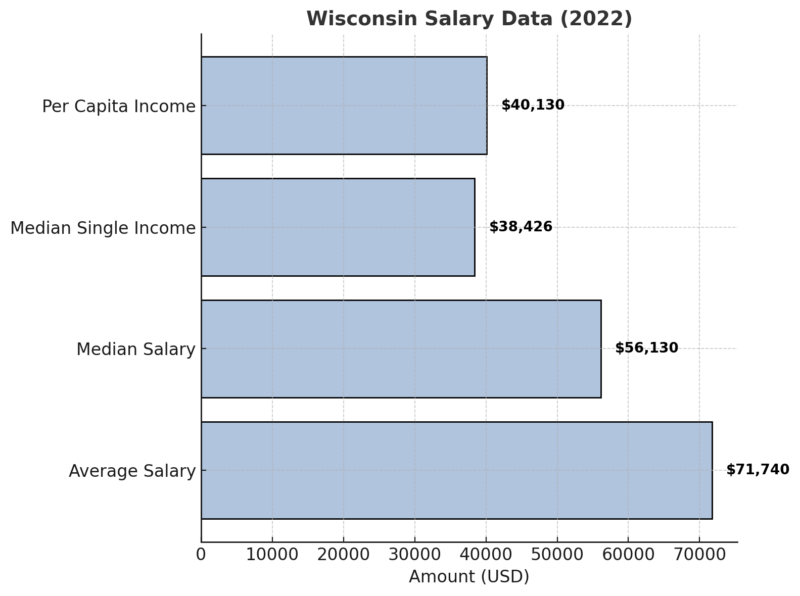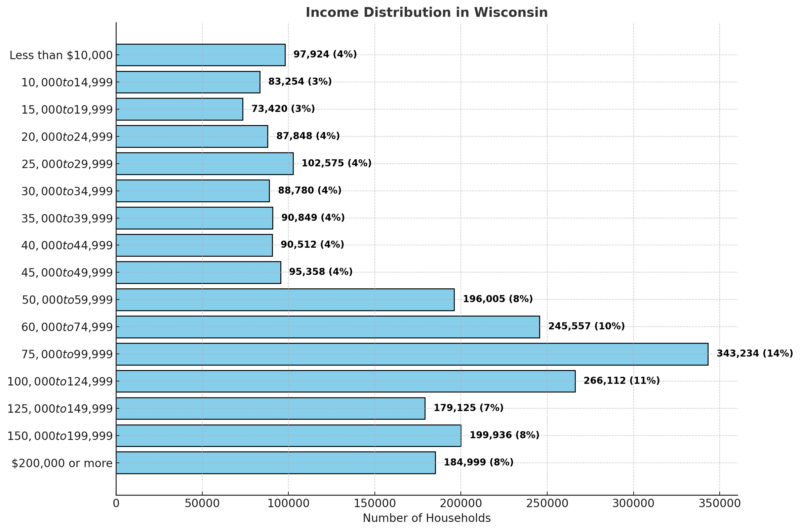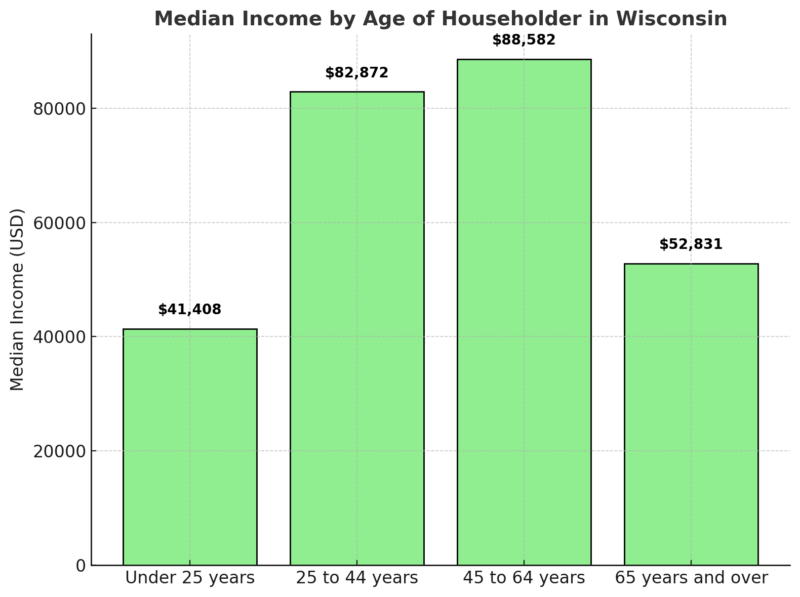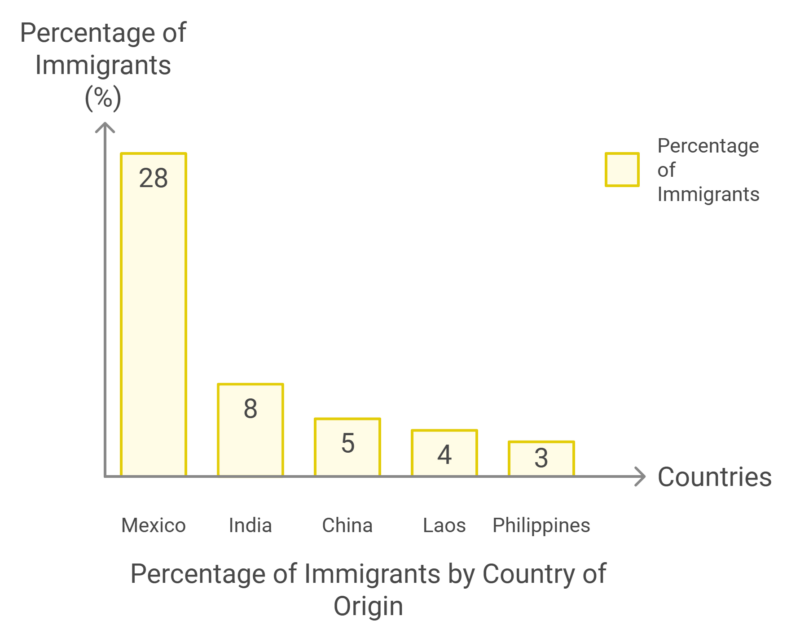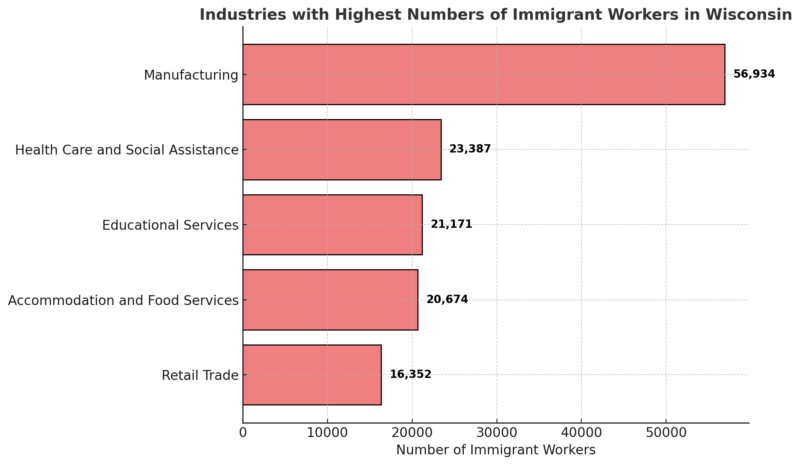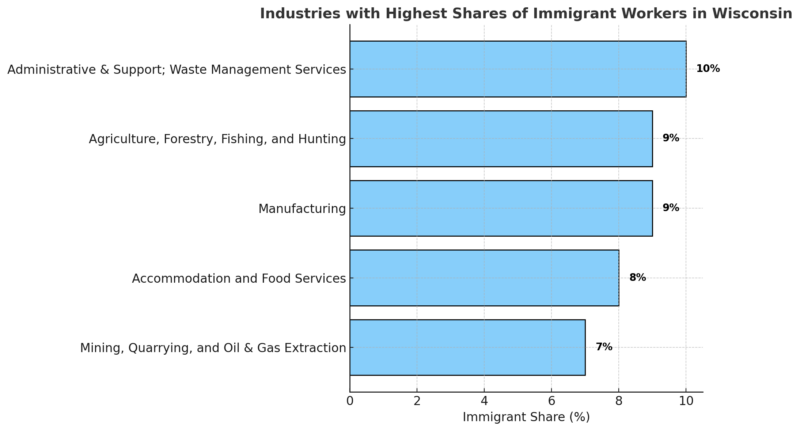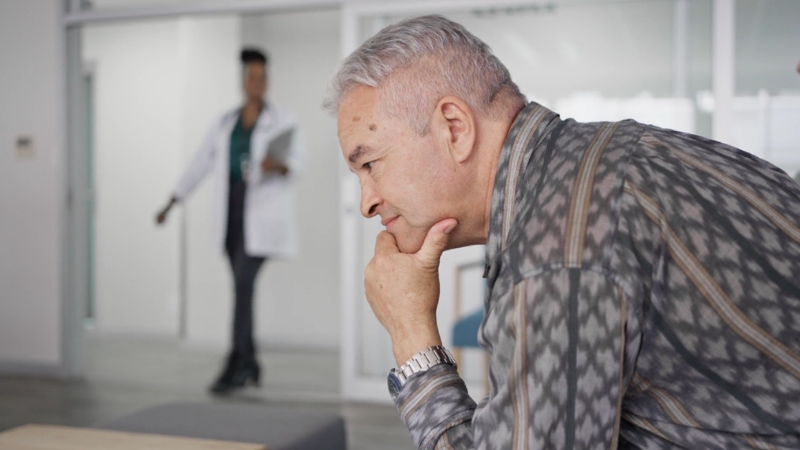Wisconsin population has reached approximately 5,931,370 as of early 2025 according to World Population Review, reflecting a modest growth since the 2020 Census.
This continued population increase offers insights into the state’s economic vitality and regional development.
Analyzing past trends, it’s notable that between 2000 and 2023, Wisconsin’s population surged by over 500,000 people.
Such steady growth underscores the state’s ability to attract and retain residents.
Table of ContentsKey Takeaways
Age Structure and Median Age
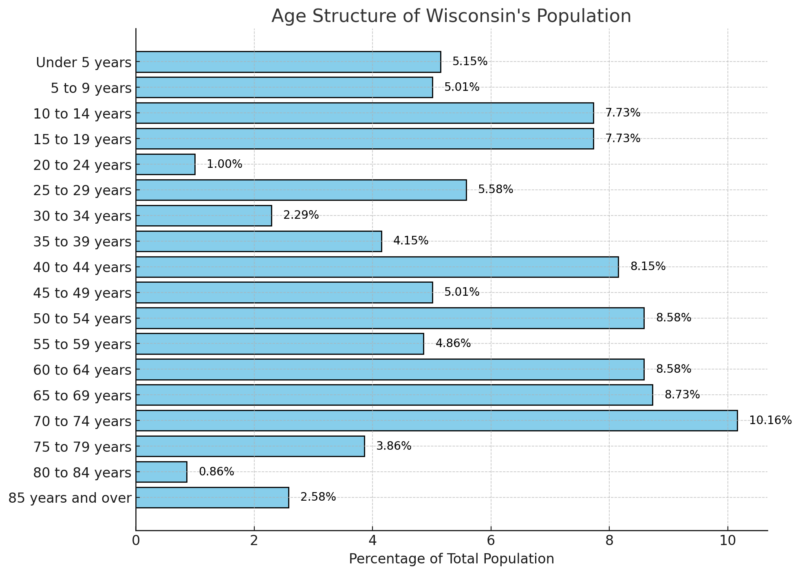
- Largest Age Group: The 70-74 years group is the largest, comprising 10.16% of the total population, suggesting a significant elderly presence in the town according to Neilsberg.
- Smallest Age Group: The smallest age group is the 80-84 range, accounting for only 0.86% of the population, which may indicate limited longevity past the mid-70s in this community.
- Children: Those under 15 years old make up about 17.89% of the population, hinting at a moderate level of young families.
- Working Age: The age group of 30 to 64 years accounts for the majority, around 41.62%, indicating a stable workforce presence.
- Senior Population: Individuals aged 65 and older represent 26.19% of the population, showing a community with a substantial aging population.
Population by Key Age Cohorts
Cohort
Age Range
Population
% of Total Population
Children
Under 18 years
186
~26%
Working Age Adults
18 to 64 years
330
~46%
Seniors
65 years and older
183
~28%
Children cohort (under 18) makes up about one-fourth of the population, showing a balance of younger age groups within the community.
Nearly half of the population falls within the working age of 18-64 years, suggesting a significant proportion of potentially employed or employable residents.
The senior population (65+), at approximately 28%, indicates a high proportion of elderly residents, which could affect community services and healthcare needs.
Gender Distribution

Wisconsin population is nearly evenly split between genders, with males slightly outnumbering females.
Males make up 50.13% of the population, while females represent 49.87%. This slight imbalance translates to approximately 15,396 more males than females across the state.
The close parity in gender distribution reflects a balanced demographic structure, which can have implications for resource allocation and policy planning in areas like healthcare, education, and community services.
Counites
Milwaukee County remains the largest in Wisconsin with a population of 914,332, though it has seen a slight decline of -2.58%. Other major counties include Dane County (582,936), Waukesha County (414,909), and Brown County (272,766) as per WPR notes in their article. These counties are the only ones with populations exceeding 200,000 residents. Price County has seen the largest population decrease with a growth rate of -4.97%. Other counties experiencing declines include Iron County (-4.19%) and Florence County (-1.75%), which highlights some shifts in population distribution across Wisconsin counties. Wisconsin has five counties with populations below 10,000. Florence County is the least populous, with 4,658 residents and a decline of 1.75%. Other small counties include Menominee, Iron, Pepin, and Forest, with Menominee County showing notable growth at 9.11%. Dane County, home to Madison, leads in growth with an increase of 10.87% since the 2010 census. Menominee County follows with 9.11% growth. Other counties showing significant growth include St. Croix, Brown, Outagamie, and Eau Claire. Wisconsin population is predominantly White, with 78% identifying as such, while Hispanic residents make up 8%—a figure that is notably lower than the national average of 19%. Black individuals constitute 6% of the population, followed by smaller groups such as Asian (3%) and Native American (1%), along with those identifying as multiracial at 4% according to Census Reporter. This demographic makeup highlights a primarily White population with smaller representations of other racial and ethnic groups, reflecting less diversity compared to the national landscape. Wisconsin’s household incomes are slightly below the national averages. The average household income is $94,995, about 10% lower than the U.S. average of $105,833, reflecting a moderate gap in earning levels. The median income is closer to the national median, at $72,458, which is only 4% below the U.S. figure as per incomebyzipcode. This indicates that, while high earners are somewhat less represented in Wisconsin, income distribution is close to the national trend, with poverty levels set equally at $27,750. The wealthiest areas in Wisconsin are concentrated in specific zip codes, with the top zip code, 53097, having an average household income of $222,712. Median household incomes in these zip codes range from around $104,000 to $148,000, showcasing strong earning potential within these communities. These areas demonstrate a notable concentration of wealth in Wisconsin, particularly in Ozaukee County and the greater Milwaukee area. Salary figures indicate an average salary of $71,740 and a median of $56,130, suggesting a balanced income distribution among full-time workers. The median income for single-person households is lower, at $38,426, which reflects individual earnings without additional household income support. The per capita income stands at $40,130, a value typically lower as it accounts for all residents, including non-earning individuals, giving a broad perspective on income distribution. Family incomes in Wisconsin show an average of $115,460, while the median stands at $92,974, indicating that families generally benefit from multiple income sources, raising the income level above single-person households. The average retirement income of $52,550 combines retirement accounts and Social Security, reflecting reliance on these sources for retired individuals. This distribution suggests stable retirement benefits, though income levels in retirement are lower than the working population’s earnings. Wisconsin’s income distribution shows a broad spread across various income levels, with the largest group (14%) earning between $75,000 and $99,999. Higher-income households, with incomes of $100,000 or more, represent 34% of the population, while lower-income households (below $50,000) make up about 34% as well. This spread highlights the diversity in income levels across the state, with a substantial middle-income population, as well as a mix of higher-earning and lower-income households. Median incomes in Wisconsin vary significantly by age, with householders aged 45-64 years earning the highest median income of $88,582, reflecting peak earning years. Younger householders (under 25) have a median income of $41,408, while those aged 65 and older see a drop to $52,831, indicating a decrease in earnings as individuals enter retirement age. This pattern aligns with typical income trends, where earning potential rises through middle age and then declines during retirement years. Educational attainment in Wisconsin demonstrates a strong high school graduation rate, with 93.7% of residents holding at least a high school diploma, slightly surpassing the national average of 89.8%. In terms of higher education, 33.8% of Wisconsin’s population has earned a bachelor’s degree or higher, which is approximately 90% of the national rate of 36.2%, suggesting that while college attainment is robust, it lags slightly behind the national average. This data indicates that while Wisconsin excels in ensuring high school completion, there is a smaller portion of individuals pursuing and completing college degrees compared to the U.S. overall. Note: “(p)” indicates preliminary data for September 2024. In Wisconsin, labor force data from April to September 2024 show stability in both employment and unemployment rates. The civilian labor force—the total of employed and unemployed individuals actively seeking work—has experienced slight increases, moving from 3,139.6 thousand in April to 3,149.8 thousand by September as per BLS published on their website. Employment numbers also grew gradually, from 3,047.9 thousand in April to 3,059.7 thousand in September, indicating consistent job availability. Unemployment figures have varied slightly but overall declined from 91.7 thousand in April to 90.1 thousand in September. In April, Wisconsin’s unemployment rate declined to 2.9%https://t.co/EIRJt3mrDr — Urban Milwaukee (@UrbanMilwaukee) May 17, 2024 Wisconsin ranks 21st in overall health and 28th in health outcomes per the 2022 United Health Foundation rankings. The state faces significant challenges, including being last for the low birthweight racial gap, low public health funding (49th), high racial disparity in high school graduation (46th), and drinking water violations (46th). Positively, adult physical inactivity and non-medical drug use have declined, and flu vaccination rates rose by 41% from 2016 to 2022. The Kids Count Data Center ranks Wisconsin 10th for child well-being. However, racial health disparities persist, with Black infants having a 14.0 per 1,000 mortality rate, much higher than the 4.35 per 1,000 rate for white infants, placing Wisconsin fourth nationally for this disparity. Heart disease, cancer, and COVID-19 are leading causes of death, while accidents, homicide, and suicide are the top causes for youth. Immigrants make up 5% of Wisconsin’s population, equaling 297,928 individuals, with a similar 5% representing native-born citizens with at least one immigrant parent. Nearly half (48%) of Wisconsin’s immigrant population are naturalized U.S. citizens, with a significant number eligible for naturalization, reflecting a growing and established immigrant community according to an American Immigration Council report. Immigrants in Wisconsin come from diverse backgrounds, with the largest group emigrating from Mexico (28%), followed by India, China, Laos, and the Philippines. This diversity underscores the significant global representation within Wisconsin’s immigrant population. Educational attainment among immigrants in Wisconsin is varied. About 32% of immigrants have a college degree or higher, slightly higher than natives (30%). However, a notable 28% of immigrants have less than a high school diploma, indicating a wide range of educational backgrounds among immigrant residents. Immigrant workers are most prevalent in manufacturing, health care, education, and food services. This distribution highlights their significant role across essential and diverse sectors, underscoring their contributions to Wisconsin’s economy. Immigrants comprise substantial portions of various industries, particularly in waste management, agriculture, and manufacturing, where they represent around 9-10% of the workforce. Their involvement is essential in sustaining these industries within Wisconsin’s economy. Immigrants in Wisconsin are widely represented across various occupational categories, particularly in production, transportation, and food services. This highlights the critical roles they play in supporting key sectors within the state. Immigrant households in Wisconsin contribute significantly to the state’s tax base, paying nearly $2.7 billion in federal, state, and local taxes in 2018. This includes substantial contributions from undocumented immigrants and DACA recipients, reinforcing the financial impact of immigrant residents on Wisconsin’s economy. Emigration trends indicate Wisconsin, similar to states like New York and Illinois, also experiences out-migration. Economic factors and weather are common reasons for such moves, as individuals relocate to states with warmer climates or for better job prospects. Yet, the impact on the state’s overall demographic structure is mitigated by incoming immigrants and internal migration. This report was crafted using recent demographic, economic, and health data from reputable sources, including the U.S. Census Bureau, the United Health Foundation, and the Annie E. Casey Foundation. Data was compiled and analyzed to highlight Wisconsin’s population dynamics, income levels, health outcomes, and immigrant contributions. Key metrics, such as age distribution, income brackets, and industry participation, were organized in tables to ensure clarity. Finally, insights were drawn from patterns in population growth, educational attainment, and labor force trends to provide a comprehensive snapshot of Wisconsin’s current demographic and economic profile.
County
Population
Growth Rate
Milwaukee County
914,332
-2.58%
Dane County
582,936
3.61%
Waukesha County
414,909
1.82%
Brown County
272,766
1.42%
Racine County
197,265
-0.15%
Outagamie County
194,199
1.69%
Winnebago County
172,782
0.56%
Kenosha County
167,339
-1.1%
Rock County
164,715
0.58%
Marathon County
139,269
0.86%
Washington County
138,580
1.3%
La Crosse County
120,720
-0.17%
Sheboygan County
117,843
-0.18%
Eau Claire County
109,020
2.95%
Walworth County
105,980
0.62%
Fond du Lac County
104,084
-0.08%
St. Croix County
97,559
3.93%
Ozaukee County
93,899
2.48%
Dodge County
88,088
-1.42%
Jefferson County
85,761
-0.52%
Manitowoc County
81,464
0.09%
Wood County
74,100
-0.13%
Portage County
71,414
1.43%
Chippewa County
67,187
1.28%
Sauk County
66,070
0.43%
Columbia County
57,954
-0.99%
Calumet County
53,686
2.29%
Grant County
51,503
-0.93%
Waupaca County
51,266
-1.03%
Barron County
46,951
0.46%
Monroe County
46,408
0.23%
Polk County
45,978
2.08%
Dunn County
45,966
1.16%
Douglas County
44,302
-0.11%
Pierce County
43,500
3.01%
Marinette County
42,246
0.85%
Shawano County
41,231
0.92%
Oconto County
39,854
1.99%
Oneida County
38,259
1.03%
Green County
37,017
-0.05%
Clark County
34,816
0.42%
Vernon County
31,277
1.89%
Trempealeau County
30,907
0.29%
Door County
30,573
1.51%
Lincoln County
28,455
0.1%
Juneau County
26,413
-1.35%
Waushara County
24,941
1.59%
Vilas County
24,028
4.03%
Iowa County
23,954
0.99%
Adams County
21,646
4.69%
Jackson County
20,817
-1.32%
Kewaunee County
20,727
0.8%
Taylor County
20,175
1.22%
Green Lake County
19,480
2.43%
Langlade County
19,306
-0.81%
Sawyer County
18,583
2.57%
Richland County
17,266
-0.1%
Burnett County
17,196
3.73%
Washburn County
16,989
2.24%
Lafayette County
16,984
2.2%
Bayfield County
16,879
3.95%
Ashland County
16,118
0.6%
Marquette County
15,899
1.98%
Crawford County
15,873
-1.32%
Rusk County
14,187
0.08%
Price County
14,045
0.14%
Buffalo County
13,448
1.04%
Forest County
9,318
1.63%
Pepin County
7,504
2.22%
Iron County
6,257
1.92%
Florence County
4,658
2.04%
Menominee County
4,246
-0.26%
Counties with Largest Populations
Counties with Fewest Residents
Counties with Rapid Growth
Ethnic and Racial Composition
Household Income in Wisconsin (2025)
Metric
Wisconsin
United States
Difference
Average Household Income
$94,995
$105,833
10% lower in WI
Median Household Income
$72,458
$75,149
4% lower in WI
Poverty Level Threshold
$27,750
$27,750
Same as national
Richest Wisconsin Zip Codes (2025)
Rank
Zip Code
Population
Mean Income
Median Household Income
1
53097
7,220
$222,712
$148,633
2
53044
2,267
$191,353
$128,036
3
53217
30,132
$183,179
$124,338
4
53092
21,161
$182,787
$121,994
5
53122
6,461
$173,043
$127,157
6
53125
1,738
$172,119
$104,318
7
53058
3,177
$168,802
$117,250
8
53017
5,369
$168,257
$141,250
9
53045
23,292
$166,912
$115,202
10
53005
21,624
$161,138
$120,988
Wisconsin Salary Data (2022)
Family and Retirement Income in Wisconsin
Income Type
Average Income
Median Income
Family Income
$115,460
$92,974
Retirement Income
$52,550
N/A
Retirement Account Income
$28,704
N/A
Social Security Income
$23,846
N/A
Income Distribution in Wisconsin
Median Income by Age of Householder in Wisconsin
Educational Attainment
The percentage of residents whose highest level of education is a high school diploma stands at 29%, about 10% above the national rate of 26%.Employment and Unemployment Rates
Month
Civilian Labor Force (thousands)
Employment (thousands)
Unemployment (thousands)
Unemployment Rate (%)
April 2024
3,139.6
3,047.9
91.7
2.9
May 2024
3,140.5
3,048.0
92.5
2.9
June 2024
3,140.2
3,048.4
91.8
2.9
July 2024
3,143.1
3,049.8
93.3
3.0
August 2024
3,143.1
3,052.0
91.1
2.9
Sept 2024 (p)
3,149.8
3,059.7
90.1
2.9
The unemployment rate remained low and stable at around 2.9% to 3.0%, reflecting strong labor market conditions in Wisconsin with minimal fluctuations. These figures suggest a relatively healthy economy with steady employment growth and low unemployment, signifying robust labor market performance in the state.Health Stats
Metric
Wisconsin
National Comparison
Notes
Overall Health Rank (2022)
21st
N/A
–
Health Outcomes Rank (2022)
28th
N/A
–
Low Birthweight Racial Gap Rank
50th
Worst in U.S.
–
Public Health Funding per Capita
49th
Low
–
High School Graduation Racial Disparity
46th
High
–
Drinking Water Violations
46th
High
–
Residential Segregation (Black/White)
47th
High
–
Children Without Health Insurance
4%
Similar to U.S.
2016-2020
Low Birthweight (Black Infants)
16.8%
Higher than U.S. avg
2020
Infant Mortality Rate (overall)
5.9 per 1,000
U.S. avg: 5.4
2020
Infant Mortality Rate (Black Infants)
14.0 per 1,000
3.2 times White rate
Ranks 4th in Black/White disparity
Leading Cause of Death (Adults)
Heart Disease
N/A
Followed by Cancer and COVID-19
Leading Cause of Death (Youth)
Accidents
N/A
Followed by Homicide and Suicide
Migration Patterns and Trends
Population Segment
Count
Percentage
Total Immigrants
297,928
5% of WI Population
Native-born with Immigrant Parent(s)
315,683
5% of WI Population
Naturalized U.S. Citizens
142,489
48% of Immigrants
Eligible for Naturalization (2017)
55,443
N/A
Countries of Origin for Wisconsin’s Immigrants
Educational Attainment Among Immigrants vs. Natives in Wisconsin
Education Level
Immigrants (%)
Natives (%)
College Degree or More
32%
30%
Some College
18%
32%
High School Diploma Only
23%
31%
Less than High School Diploma
28%
7%
Industries with Highest Numbers of Immigrant Workers
Industries with Highest Shares of Immigrant Workers
Occupations with Highest Numbers of Immigrant Workers
Contributions of Immigrants in Wisconsin
Tax Contributions (2018)
Amount
Total Federal Taxes Paid by Immigrants
$1.7 billion
Total State & Local Taxes Paid by Immigrants
$968.3 million
Federal Taxes by Undocumented Immigrants
$156.9 million
State & Local Taxes by Undocumented Immigrants
$101.1 million
State & Local Taxes by DACA Recipients
$15.9 million
Methodology
References
Related Posts:

